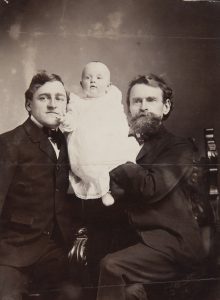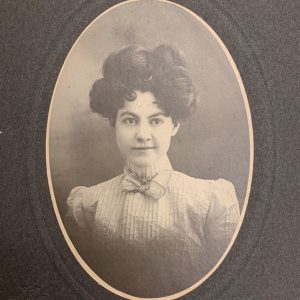William Andrews Clark Jr.

William Andrews Clark, Jr. was born in Deer Lodge, Montana in 1877, the youngest son of copper baron William Andrews Clark, Sr. (1839-1925) and Katherine Stauffer Clark (1844-1893). Clark, Jr. (or WAC Jr.) attended schools in France and New York, and graduated from the University of Virginia with a Bachelor’s Degree in Law in 1899. He then returned to Butte, Montana, where he worked as a partner in the law firm Roote and Clark, and also served on the boards of several mining and industrial concerns.
In 1902, he married Mabel Duffield Foster (1881-1903), who had grown up in Butte just down the street from the Clark residence. Mabel died of sepsis following the birth of their son, William Andrews Clark, III (“Tertius”), in 1903.
In 1907, Clark married Alice Genevieve McManus Medin (1884-1918), a recent divorcee originally from Virginia City, Nevada, and they moved from Butte to Los Angeles in the early 1910s.
Their house at Adams Boulevard and Cimarron Street occupied the grounds that the Clark Library still stands on today. From 1911 to 1915, Clark purchased five additional contiguous lots, and then, in 1928, the rest of the city block bounded by West Adams Boulevard, West 25th Street, Gramercy Place, and Cimarron Street—nearly five acres. Though Clark would continue to be involved in the Elm Orlu Mine and Timber Butter Milling Company, among other mining businesses until his death, he does not appear to have worked actively as a lawyer after his move to Los Angeles. Alice McManus Clark died at the Clark residence in Los Angeles in November 1918. Clark never remarried, and soon after Alice’s death, met his long-time partner, Harrison Post, for whom he purchased a mansion across the street.
Clark had many interests. A serious amateur violinist, he founded the Los Angeles Philharmonic in 1919 to be the city’s first permanent symphony orchestra. He was its sole financier for 15 years. He also helped to establish the Hollywood Bowl, one of the world’s largest natural amphitheaters, where the Los Angeles Philharmonic still performs today.
Around the time of his move to LA, WAC Jr. began collecting antiquarian and fine press books as a serious hobby (he had dabbled in book buying previous to this). In 1919, he hired bibliographer Robert E. Cowan to consult on collection-building and the compilation of a printed library catalog. The first volume of this was printed in 1920 by San Francisco printer John Henry Nash, and many other volumes, dedicated to different portions of the collection, would be issued over time, all printed by Nash.
After a small kitchen fire in his home around 1924, Clark decided he needed a separate, fireproof library building and hired architect Robert David Farquhar to design the present library building, with interior decoration by Harrison Post. Upon completion in 1926, Clark promised the library and grounds to UCLA after his death. When Clark died after a heart attack at his summer home, Mowitza Lodge, at Salmon Lake in Montana in 1934, the Clark Library became a part of UCLA.
Clark was interred in the Farquhar-designed family mausoleum he built on the island of Sylvan Lake at Hollywood Forever Cemetery. Both of his wives and his son are also interred there.
The William Andrews Clark, Jr. and William Andrews Clark Memorial Library Records (Clarkive.Pre-1934) contain more information about Clark, his family and circle, and the early history of the library: https://oac.cdlib.org/findaid/ark:/13030/kt2m3nf2td/

